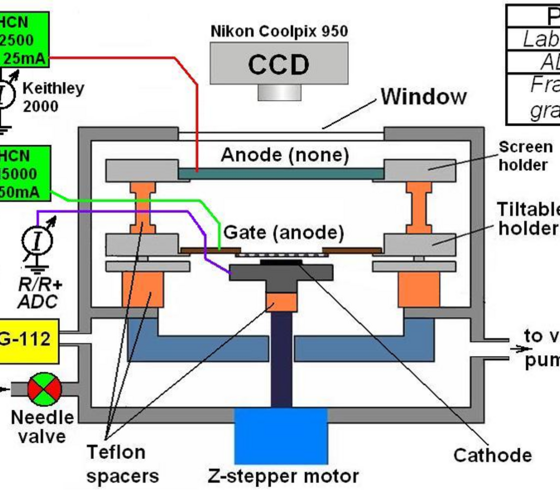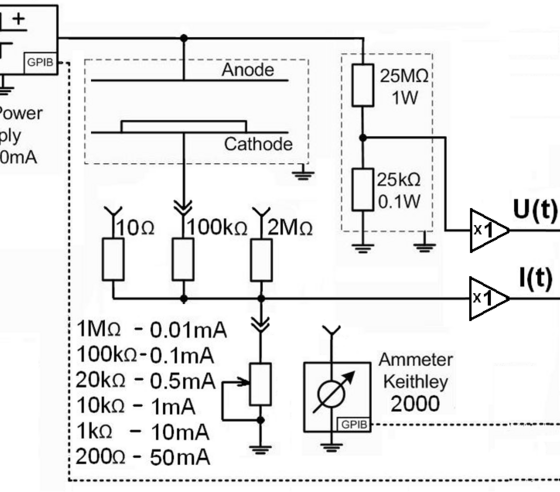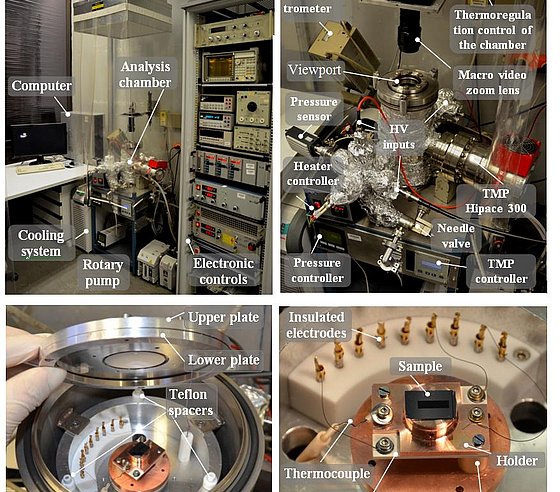Integrale Meßapparatur mit Leuchtschirm (IMLS):

Triode (diode) configurations of the IMLS

Block diagram of the electric circuit of the IMLS in diode configuration.

Images of the system
The IMLS is used for determination of the integral current of the cathodes in dc and pulsed modes up to 5kV voltage (17 V/µm field at 300 µm gap) and 50mA current. The IMLS is equipped with a data acquisition system based on a self-developed software using LabView programming package. It allows registration of full signals of the currents and voltages in the dc and pulsed modes as well as their time dependence during the long-term tests.The signal registration of the system is significantly improved comparing to the previous version described in [Lys05]. Serial resistors are used for the cathode protection against discharges (see Fig. below) and fast current readout in the pulsed mode. Registration of current and voltage signals on a PC is done via an analog to digital (ADC) converter (Keithley KPCI-3102) after a unity gain amplifier. A set of ammeters are used for the dc measurements (via GPIB interface) as well as for the current calibration. The system can be switched from the diode to a triode configuration as shown in the Fig. below.
The FE current distribution from the cathodes shown by the luminescent screen can be stored with a CCD camera with around 5 µm lateral resolution. The image signal from the camera is transmitted to a PC via the Ethernet connection. Acquisition of images is incorporated into the mentioned LabView program, which stores them as time- and I-V-referenced data for a faster processing and a smooth final correlation between them. Processing of the images is done using the image analyzing software AnalySIS FIVE® [Ana].
Finally, the long-term performance of the cathodes can be tested in the dc mode at a base pressure of about 10-7 mbar as well as under enhanced nitrogen or oxygen pressure levels up to 10-5 mbar provided by filtered high-purity gases (99.995 %) through a needle valve for up to 5 hours. A quadrupole mass spectrometer (QMG-112) served both for partial pressure measurements and control of a luminescence layer evaporation with a sensitivity limit of 5x10-11 mbar (e.g. for S).
